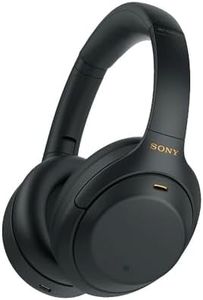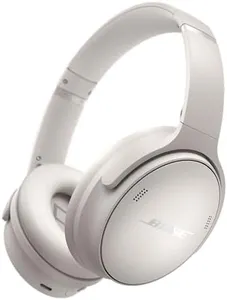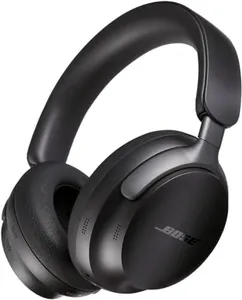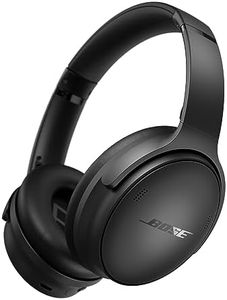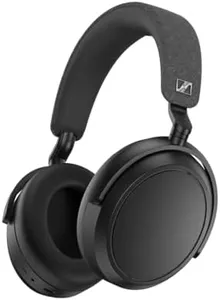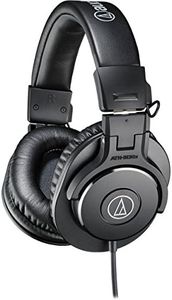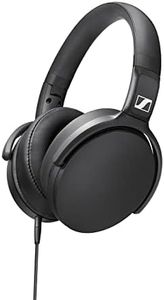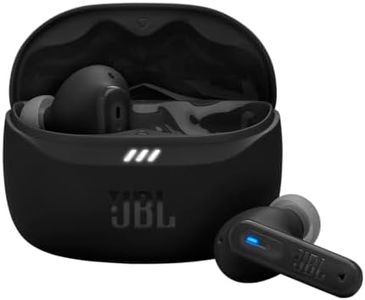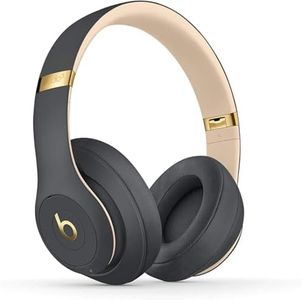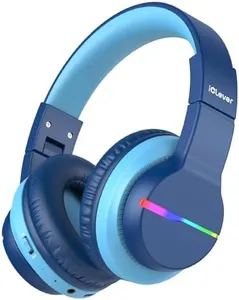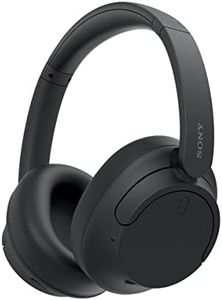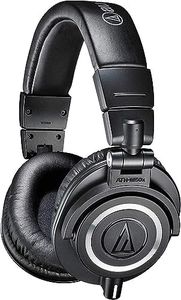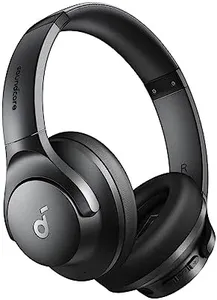We Use CookiesWe use cookies to enhance the security, performance,
functionality and for analytical and promotional activities. By continuing to browse this site you
are agreeing to our privacy policy
10 Best Headphones For Airplanes
From leading brands and best sellers available on the web.Buying Guide for the Best Headphones For Airplanes
Choosing headphones specifically for use on airplanes is all about comfort, blocking out noise, and making sure you can enjoy your audio even in a bustling, noisy environment. You'll want something that feels good during long flights, effectively reduces cabin noise, and works well with airplane entertainment systems. Understanding key features will help you find a pair that makes your flying experience much more pleasant.Noise CancellationNoise cancellation refers to the headphone's ability to minimize or block out unwanted background sounds, especially the constant engine hum on an airplane. This is important because it lets you listen to your music, movies, or podcasts at lower volumes and with much greater clarity. There are two main types: active and passive. Active noise cancellation uses microphones and electronic processing to reduce ambient noise, making it best for planes, while passive just relies on physical padding. If you fly regularly or are sensitive to noise, active noise cancelling headphones are usually the best choice, but if you prefer something lightweight and simple, passive options still help some.
Comfort and FitComfort and fit mean how the headphones feel when worn for a long time, which is crucial on long flights. Factors include ear cup padding, headband tension, and overall weight. There are over-ear (big cushions that sit around your ears), on-ear (pads rest on your ears), and in-ear (small buds that go into your ears) designs. Over-ear styles are best for comfort and noise isolation during long flights, while in-ear models are more compact and easier to pack. Pick the style that matches how long you’ll wear them and your preference for portability versus comfort.
Battery LifeBattery life is how long the headphones work before needing a recharge, especially important for noise-cancelling models that use power for their electronics. For long flights or layovers, you’ll want headphones that can last at least 15-20 hours to avoid running out mid-trip. If you take short flights or are okay with charging between uses, shorter battery life could be fine, but for frequent or long-haul travelers, opt for models with extended battery life.
Wired and Wireless UseMany headphones can connect via Bluetooth (wireless) or with a physical cable (wired). This spec is important because airplane entertainment systems usually require a wired connection. Look for headphones that offer both options: enjoy wireless convenience in airports or at your destination and plug in with a cable while on the plane. If you just want to listen to airplane audio, wired-only models suffice, but if you want modern flexibility, both wired and wireless is best.
Sound QualitySound quality is about how clear and full your audio sounds. On airplanes, good sound quality makes it easier to follow dialogue or enjoy music despite background noise. Sound can be divided by bass (deep tones), mids (vocals), and highs (cymbals, sharp sounds). Look for balanced sound, though if you listen to movies with lots of effects, more bass might be appealing. If you care about music detail, prioritize clarity. Choosing sound quality is personal—sample headphones if you can to decide what sounds best to you.
Portability and FoldabilityPortability and foldability describe how easy the headphones are to pack and carry. On flights, you want something that can be conveniently stored in a carry-on or bag. Over-ear headphones that fold into a compact case are ideal for travelers, but smaller, non-folding types might fit pockets or small bags better. If you value keeping things light and simple, compact or in-ear styles may work, but for those who want full comfort and features, a foldable over-ear model is worth the extra space.
